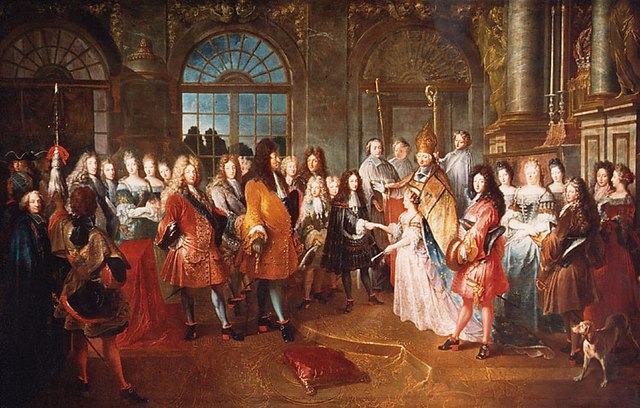Arranged marriage is a type of marital union where the bride and groom are primarily selected by individuals other than the couple themselves, particularly by family members such as the parents. In some cultures, a professional matchmaker may be used to find a spouse for a young person.
Wedding of Emperor Pedro I of Brazil to Amélie of Leuchtenberg in the Imperial Chapel in 1829, three years after the death of his first wife Maria Leopoldina of Austria.
"Marriage à-la-mode" by William Hogarth: a satire on arranged marriages and prediction of ensuing disaster
In 1770, Empress Maria Theresa sent 14-year-old Maria Antonia to France to marry Louis-Auguste
The arranged marriage in 1697, of Marie Adélaïde of Savoy, age 12 to Louis, Duke of Burgundy, heir apparent to the throne of France, as a result of the Treaty of Turin (1696). The marriage created an alliance between Louis XIV of France and the Duke of Savoy.
Matchmaking is the process of matching two or more people together, usually for the purpose of marriage, in which case the matchmaker is also known as a marriage broker. The word is also used in the context of sporting events such as boxing, in business, in online video games and in pairing organ donors.
Gerard van Honthorst, The Match-Maker (1625)
Traditional matchmaking is a usual folk program in Russian museums.
Matchmakers sitting on either side of the bride and groom in this Japanese wedding photo







